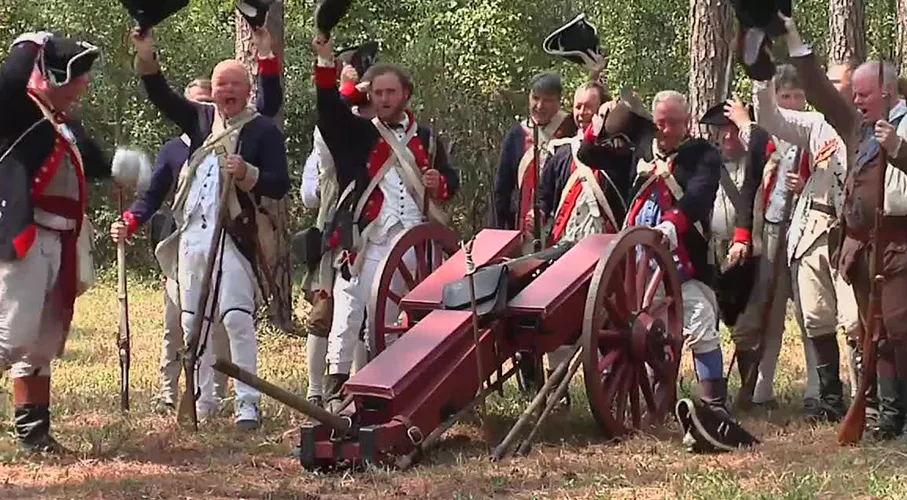
Now available on Knowitall!
African Americans, both free and enslaved, served in the American and British armies as armed troops and as laborers known as "pioneers." In many places, slaves were offered freedom if they agreed to fight for the British. Large numbers of slaves deserted their plantations, particularly in the Lowcountry. But as far as the backcountry is concerned, in the case of the Bratton's slave Watt, some felt that their loyalty was to the family who owned them.
The National Park Service celebrated its centennial in 2016. South Carolina ETV and the Sons of the American Revolution collaborated to tell the stories of the Southern Campaign of the American Revolution. Eight five-minute video segments with online curriculum for South Carolina teachers are now available. Each of the modules includes a short video episode, photos, maps and online curriculum for S.C. teachers.
THE SOUTHERN CAMPAIGN OF THE AMERICAN REVOLUTION
A. Overview
C. Brattonsville (Huck’s Defeat)
G. Cowpens
I. Ninety Six
A note from the producer, Steve Folks of South Carolina ETV:
South Carolina’s role in the Revolutionary War comes to the classroom in new online resources produced by South Carolina ETV in conjunction with the National Park Service, The Self Foundation, and both the local and national chapters of the Sons of the American Revolution.
The new offering, The Southern Campaign of the American Revolution, picks up the story after the fall of Charleston in 1780. After catastrophes at The Waxhaws and Camden, victories in battles and skirmishes such as Brattonsville, Musgrove Mill, Kings Mountain, and Cowpens expelled the British invaders and defeated their loyalist friends, leading to the surrender at Yorktown, Virginia. The Battle of Guilford Courthouse (North Carolina) and the siege of Ninety Six are also featured in the series.
The Southern Campaign was critical in determining the outcome of the American Revolutionary War, yet the South’s importance has been downplayed in most historical accounts to date. SCETV has previously produced a documentary for public television, The Mapping of Kosciusko’s Tunnel, about archeological work at Ninety Six National Historic Site.
Eight online educational lessons are based around short video segments produced in a documentary style, consisting of historical reenactments, demonstrations, interviews with historians, period artifacts and music, artistic renderings, and maps. SCETV has also utilized the production as a training exercise for students who serve as assistants, graphic artists and on-camera talent. Media for the series is on the web at SCETV’s KnowItAll.org classroom resources site, and teachers’ guides are at SCETV’s LearningWhy.org.
Funding and support for the production is provided by The National Park Service, The Self Family Foundation, The George Washington Endowment Fund of the National Society of the Sons of the American Revolution, The South Carolina State Society of the Sons of the American Revolution, and a contribution from Dr. Charles B. Hanna.